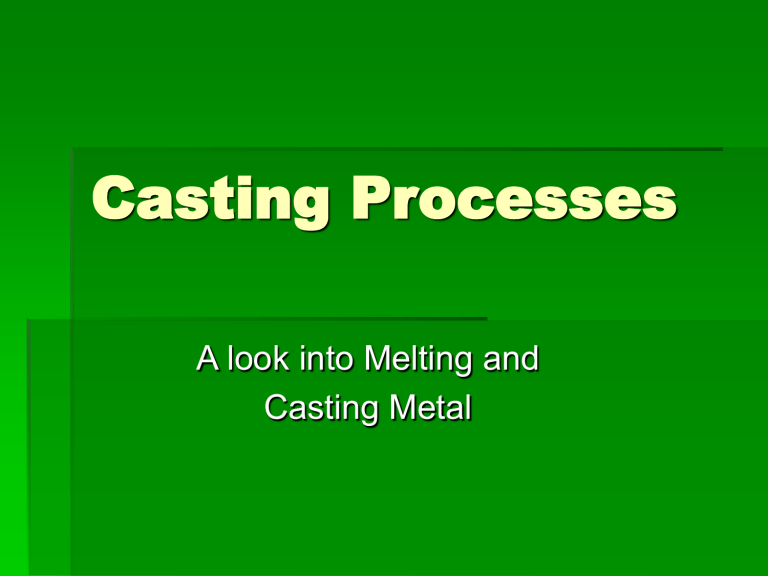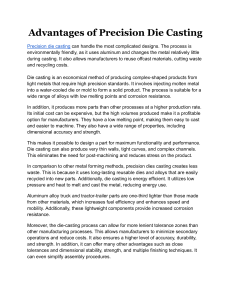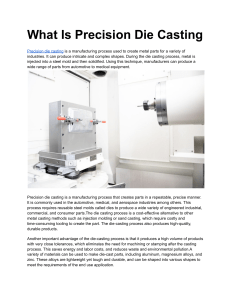
Casting Processes A look into Melting and Casting Metal Metal Casting Create liquid metal - Melting Combustion used to melt material Electricity used to melt material Create solid shape - Casting Permanent mold casting Semi Permanent mold casting Consumable mold casting Oxy-fuel Furnace Uses a fuel gas such as propane, natural gas or acetylene Oxygen or atmosphere is blown in and combined with fuel Heat from combustion melts the charge Oxy-fuel Furnace Resistance Furnace A current passed through a material resulting in ohmic heating Radiation heats charge material Some convection and conduction occurs Resistance Furnace Induction Furnace A current is passed through a water cooled coil near or around the charge Eddy currents are produced in the charge material in response to the coil current Heat is generated through ohmic heating in the material Induction Furnace Electric Arc Furnace A current is passed from separate electrodes creating arcs of ionized gas Heat is transferred from the arc into the charge material Can be either DC or AC Electric Arc Furnace Permanent Mold Casting Mold that can be used repeatedly Commonly associated with die casting Mold material varies with metal to be cast Used for large number of pieces to be cast due to initial cost of the mold Permanent Mold Casting Continuous Casting A water cooled mold is used to make a long casting of constant cross section Liquid metal is poured into the mold against a starter block As the metal solidifies it is removed exposing more liquid to the mold face Continous Casting Semi-permanent Casting A mold is made with both permanent and single use parts Consumable parts are usually cores made of chemically bonded sand After each pour the mold is cleaned and new consumables are added Semi-permanent Casting Investment Casting A refractory material (investment) is poured around or built up on a pattern The investment is hardened by drying or heating The pattern is removed by melting or burning Metal is poured into the resulting cavity Investment Casting Sand Casting Uses sand to hold the desired shape to be cast Bonded with chemicals or clay with water or oil Many different types of sand casting Sand Casting





